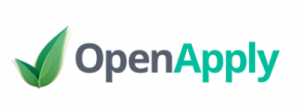Building the pathway to inclusion
Patrick McGrath, Education Technology Strategist, Texthelp
Building the pathway to inclusion
If there’s one thing we can say with confidence this year, it’s that education has become increasingly dependent on technology for teaching and learning. As learning evolves, we are finding new ways to engage, motivate, assess and teach students. We’ve jumped headfirst into tools like Google Classroom and Microsoft Teams. We’ve suddenly found ourselves in live video lessons and discovering the power of polls and analytics. We’ve struggled too – from the repetitive cry of ‘unmute’ through reducing distractions to figuring out how best to support differentiation when technology is an increasing portion of learning time. But, no matter how the ‘where’ of learning occurs in the coming months and years, we know that technology will continue to become increasingly central to all that we do. Why? Because with all the challenges we can see the upsides. We see new opportunities for engagement and for helping our students express their learning. It’s about the balance of putting teaching and learning first and skillfully using technology to underpin solid pedagogical strategies.
There’s a second thing though. The diversity of the students we teach stays the same – everyone with a differing approach to learning, and many requiring additional help and support to ensure that they continue to receive equity of access and stay included. For most students, as teachers, we only ever see the tip of the iceberg – the 10% of everything that contributes to our students being who they are. We don’t see the impact or challenges of home life, challenges around language or their mental health and wellbeing, and this is never more apparent than when students learn remotely.
Consider individual needs – statistics show that on average, around 5% of our class is identified and supported as being Dyslexic, yet the stark reality is that on average 17% of all students struggle with Dyslexia. The move to technology can not and must not forget this, and it behoves us as educators to ensure that the tools and supports that were in place inside our classrooms continue to be planned for and provided, wherever learning occurs. We need to rethink our notion of diversity and we need to start to redefine what it means to be inclusive, and how technology can reach and support every student.
Diversity stretches across language, culture, ethnicity and individual needs. It must, though, also include respect of the fact that research shows us that our students have an almost infinite path to learning. It’s their very differences that make them unique. Technology is inherently flexible, and when used well can and does support students in enabling a personalised, tailored approach to learning that can support this uniqueness. We all need to make a start, but how?
As, always, it starts with learning. The Universal Design for Learning (UDL) framework is based upon the simple tenet of universal design – it’s aim is to make learning accessible to all by recognising that each and every student is unique and the learning community they are in is truly diverse. It seeks to encourage the provision of pathways for educators to adopt basic, practical approaches to designing learning from the outset, by focusing on designing learning for the margins and not the centre-ground of the student experience. In doing so, it postulates that we can reach every learner in an almost endless variety of ways that are personal to them.
We can start to embrace UDL by rethinking how we approach learning. Instead of objectives, we can focus on goals. Why? Think of it like skiing. Head to the top of any slope and there is one simple goal – get to the bottom. Every slope has its map providing alternate routes to reach that goal – at various levels of challenge and difficulty. As a skier, you take the route that works best for you or choose to stretch and challenge yourself with the more difficult path to your goal than the last time you tried. If we move to goal-orientated strategies, we open up the paths to our diverse learners to reach their goal in a multitude of ways.
The key then is to create these paths, and this can be achieved in many ways – not least of which today is through the effective application and use of technology tools. Once integrated into learning design and technology platforms, these tools can be used by everyone to ensure content, knowledge, expression and understanding is available in countless, unique ways across digital platforms and devices. As an example, tools like text-to-speech provides students with specific needs a way to support comprehension and understanding but also support high achieving students to prepare for effective answering for exams. Simple forms provide a quick way to monitor progress and understanding or provide fast, effective feedback for every student. Providing the right range of technology tools delivers multiple paths to engagement and expression, and in turn, expands accessibility for all students.
To embrace the opportunity before us, we have to be more deliberate, more flexible, provide more opportunities and take more risks. We need to endeavour to remove more barriers by shifting our focus to providing the widest range of tools and paths to learning if we are to support every student.
The technology journey ahead will give us the ability to innovate, to engage with and to support students like never before. If we embrace it, the result is that every learning experience can be representative of, and tailored to, the individual.
The goal is inclusive education, wherever learning occurs. It’s time to build the pathways to achieve it.
What do you think about the points raised in this article? Please share your thoughts below.
ABOUT THE AUTHOR

Resident Education Technology Strategist at Texthelp, Patrick is a passionate educator, and an accomplished international speaker, panellist, blogger and contributor across a wide range of media. His content is engaging, inspiring and motivating – focused on how technology can make a real and meaningful impact on teaching and learning for all. An Apple Education Mentor and Google Certified Educator, Patrick received the UK Digital Leader 100 award and was appointed an Honorary Fellow of the University of Ulster (School of Education) in 2016. His specialisms include literacy, inclusion, assessment educational vision, leadership, and change management.















